Revitalizing Waterfront Spaces
The Silk Bridge, situated on the south bank of the Qiantang River in Hangzhou’s Binjiang District, stands as a pivotal component of the extensive 12-kilometer waterfront public space rejuvenation project undertaken by TJAD Original Design Studio. This innovative endeavor aims to transform the urban landscape, offering citizens convenient transportation routes and scenic promenades along the river.
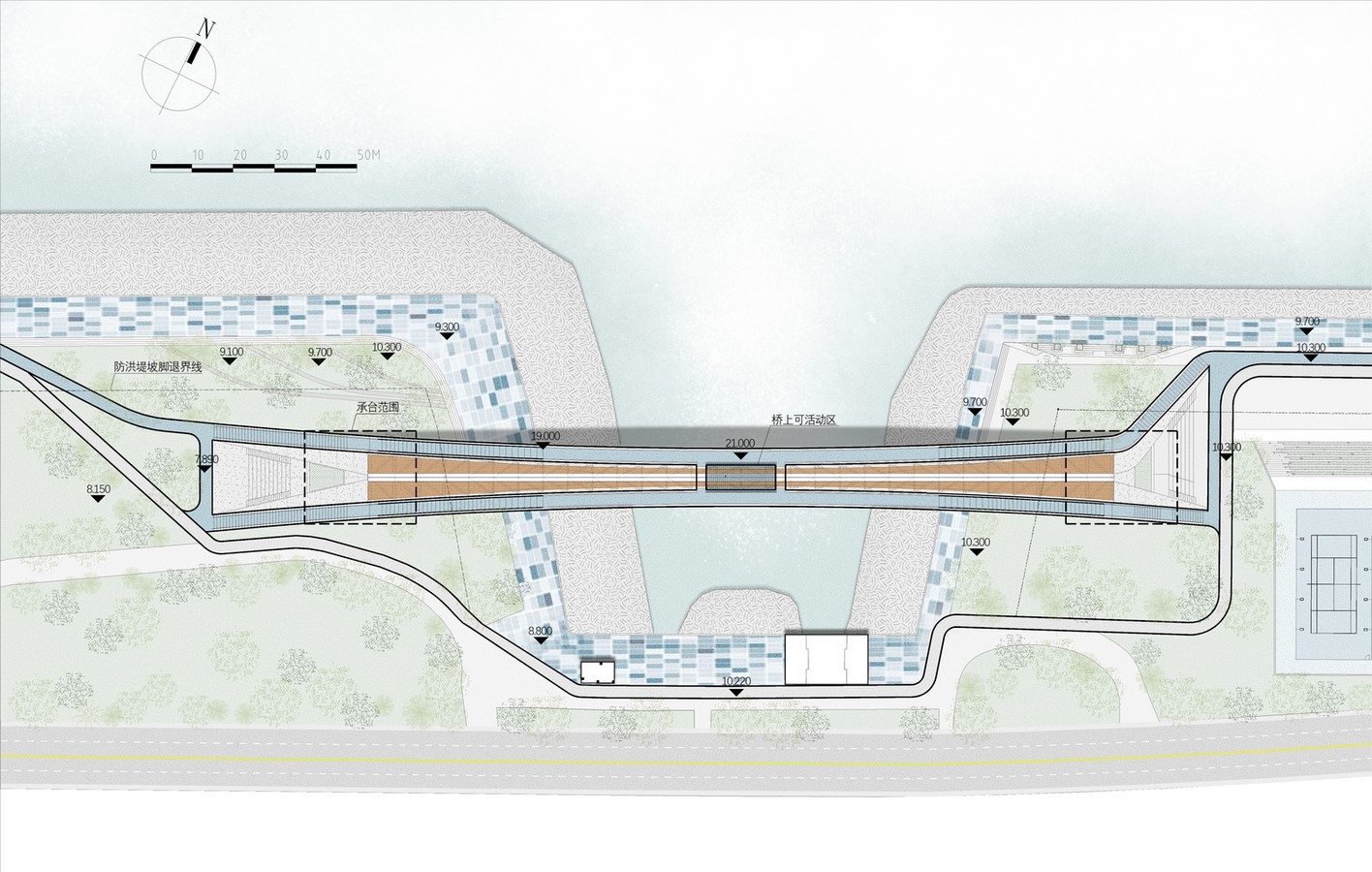
Bridging Urban Divides
Previously, the Xiaoshan Shiplock posed a significant obstacle, disrupting the flow of pedestrians and vehicles along the waterfront. The design of the Silk Bridge seamlessly integrates with the existing sports track, creating a vital connection point that not only circumvents the ship lock but also provides unobstructed views of the Qiantang River. By bridging this urban divide, the Silk Bridge restores continuity to the waterfront public space, enhancing accessibility and promoting recreational activities for residents.
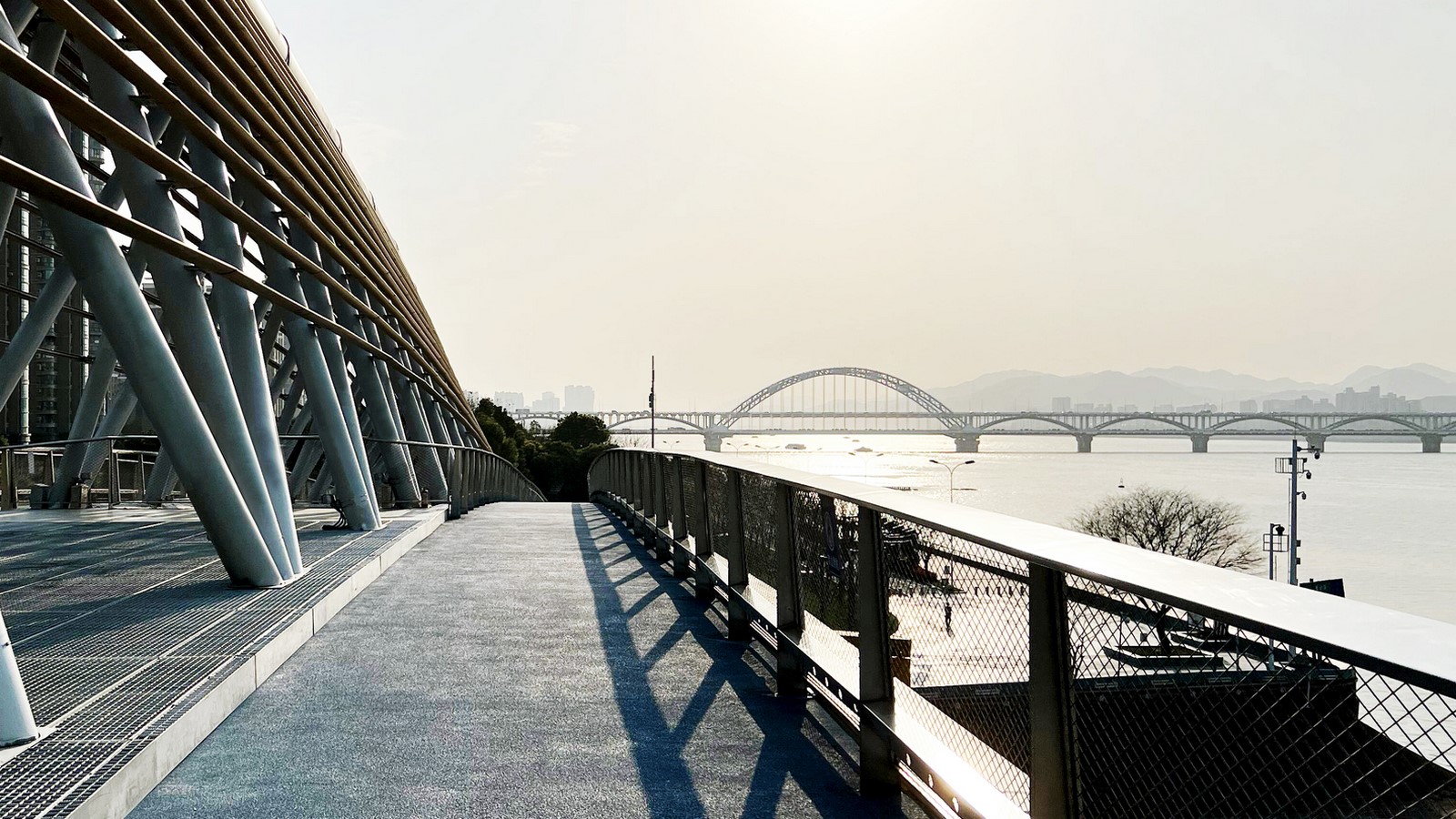
Multi-Functional Design
The Silk Bridge is not merely a crossing but a vibrant urban hub designed to accommodate various functions and experiences. Enlarged staircase plazas at both ends of the bridge serve as communal gathering spaces, fostering urban vitality and social interaction. The bridge features two distinct walkways—one honoring history by facing the ship lock and the other embracing the future with panoramic views of the river. These paths converge at a central point, where an upturned structure creates a dynamic activity space, inviting pedestrians to immerse themselves in the bridge’s architectural marvel.
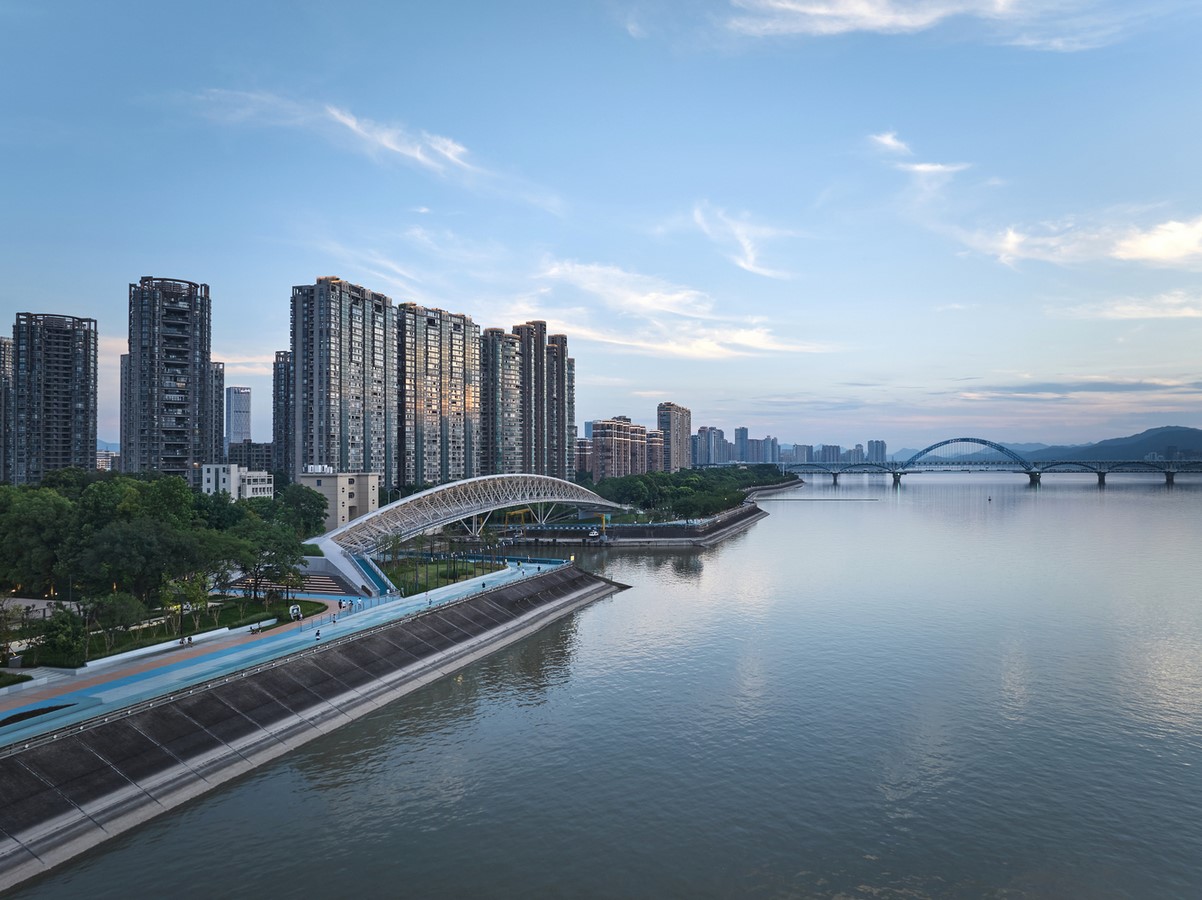
Structural Innovation
Collaborating closely with structural engineers, the architectural designer meticulously crafted the Silk Bridge to achieve both aesthetic elegance and structural integrity. The bridge’s unique curvature, gradually rising from 3.5 meters to 8 meters in height over its 180-meter span, exemplifies a harmonious blend of form and function. Constructed with high vanadium-sealed cables—the largest in China—the Silk Bridge sets new standards in architectural innovation and engineering excellence.
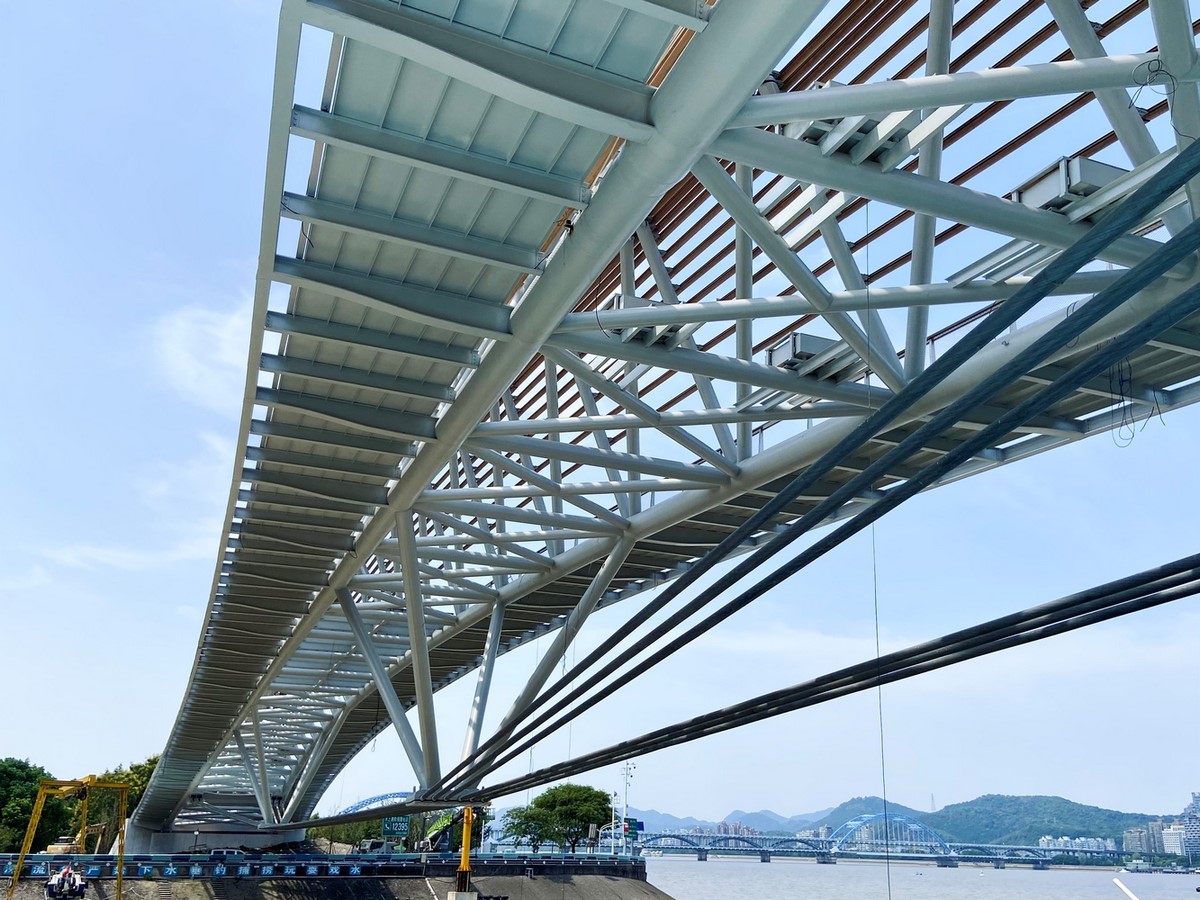
Construction Excellence
The construction of the Silk Bridge presented unprecedented challenges, requiring meticulous planning to ensure minimal disruption to waterway traffic. Divided into three sections, the bridge was assembled using an external unbonded prestressed construction method, allowing for seamless installation while maintaining navigational access for ships. Recognized as an exemplary construction method, the Silk Bridge construction stands as a testament to Binjiang District’s commitment to innovation and excellence.
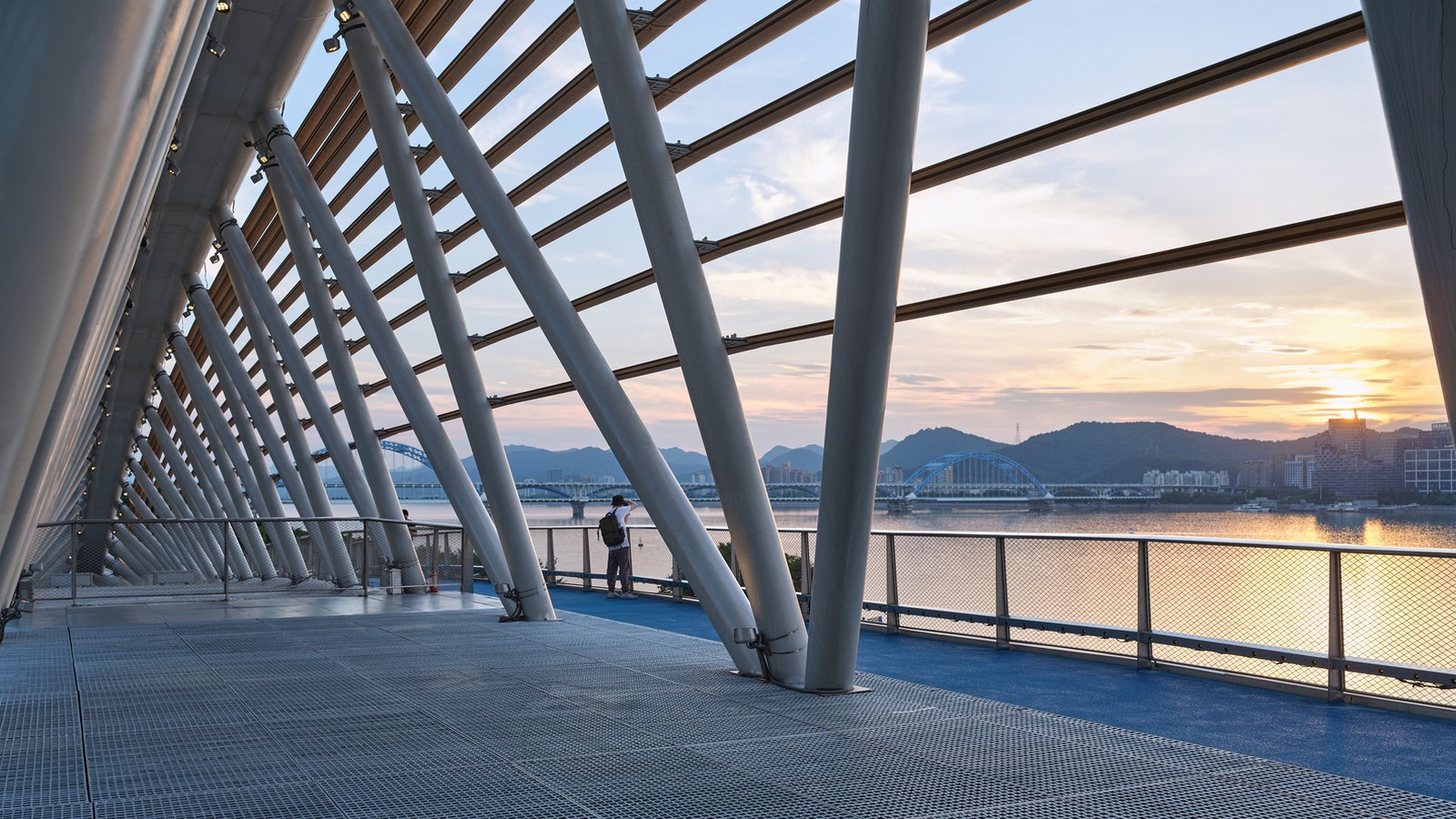
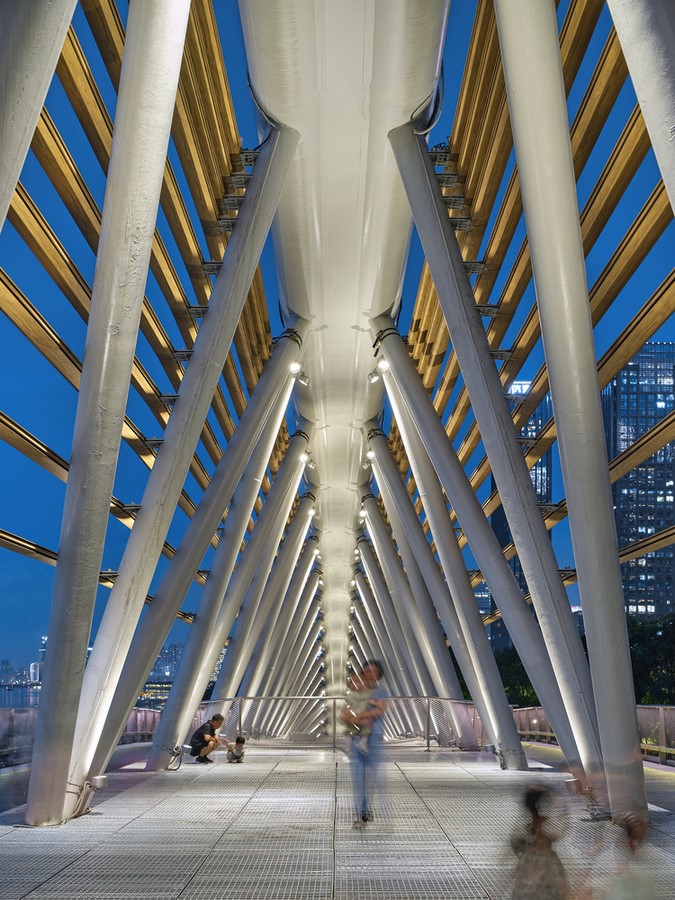
Conclusion: A Symbol of Urban Renewal
In summary, the Silk Bridge transcends its function as a mere pedestrian crossing, emerging as an iconic symbol of urban renewal and connectivity in Hangzhou. From its innovative design to its meticulous construction, the bridge embodies the spirit of progress and transformation, revitalizing waterfront spaces and fostering community engagement for generations to come.


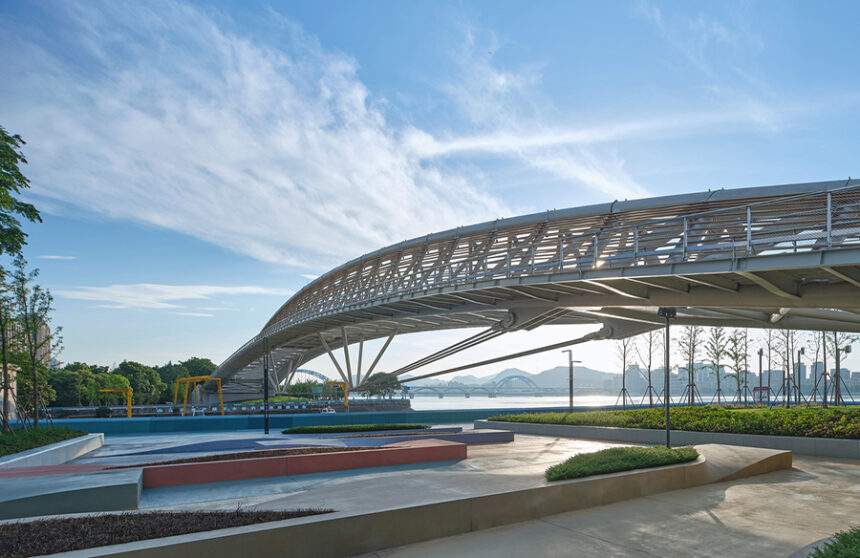


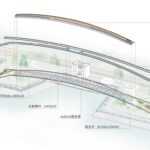



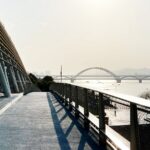









Leave a Reply